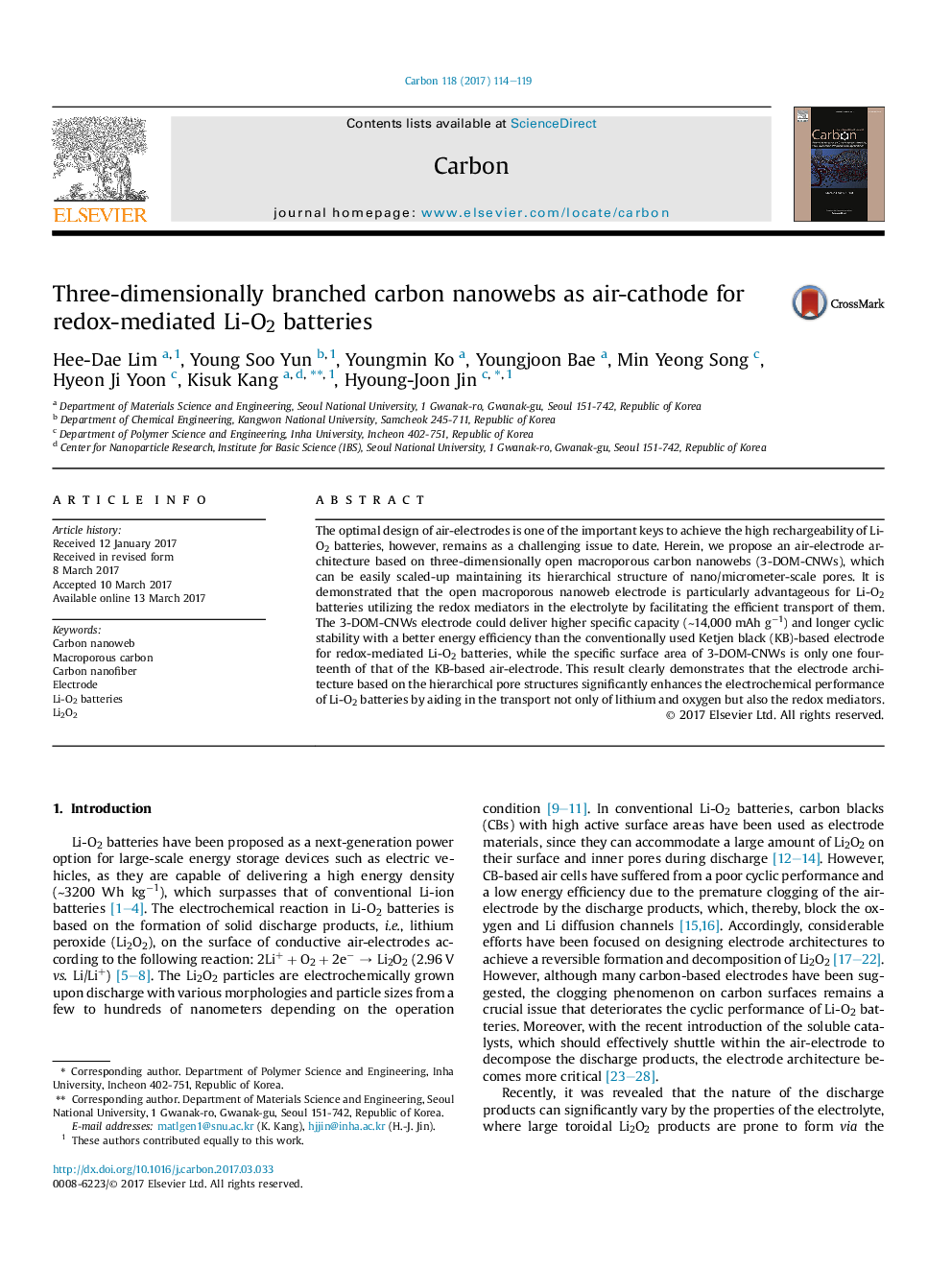| Article ID | Journal | Published Year | Pages | File Type |
|---|---|---|---|---|
| 5432004 | Carbon | 2017 | 6 Pages |
The optimal design of air-electrodes is one of the important keys to achieve the high rechargeability of Li-O2 batteries, however, remains as a challenging issue to date. Herein, we propose an air-electrode architecture based on three-dimensionally open macroporous carbon nanowebs (3-DOM-CNWs), which can be easily scaled-up maintaining its hierarchical structure of nano/micrometer-scale pores. It is demonstrated that the open macroporous nanoweb electrode is particularly advantageous for Li-O2 batteries utilizing the redox mediators in the electrolyte by facilitating the efficient transport of them. The 3-DOM-CNWs electrode could deliver higher specific capacity (â¼14,000Â mAh gâ1) and longer cyclic stability with a better energy efficiency than the conventionally used Ketjen black (KB)-based electrode for redox-mediated Li-O2 batteries, while the specific surface area of 3-DOM-CNWs is only one fourteenth of that of the KB-based air-electrode. This result clearly demonstrates that the electrode architecture based on the hierarchical pore structures significantly enhances the electrochemical performance of Li-O2 batteries by aiding in the transport not only of lithium and oxygen but also the redox mediators.
Graphical abstractThis study reports an air-electrode architecture based on three-dimensionally open macroporous carbon nanowebs (3-DOM-CNWs), which deliver higher specific capacity (â¼14,000Â mAh gâ1) and longer cyclic stability with a better energy efficiency than the conventionally used Ketjen black (KB)-based electrode for redox-mediated Li-O2 batteries.Download high-res image (352KB)Download full-size image
